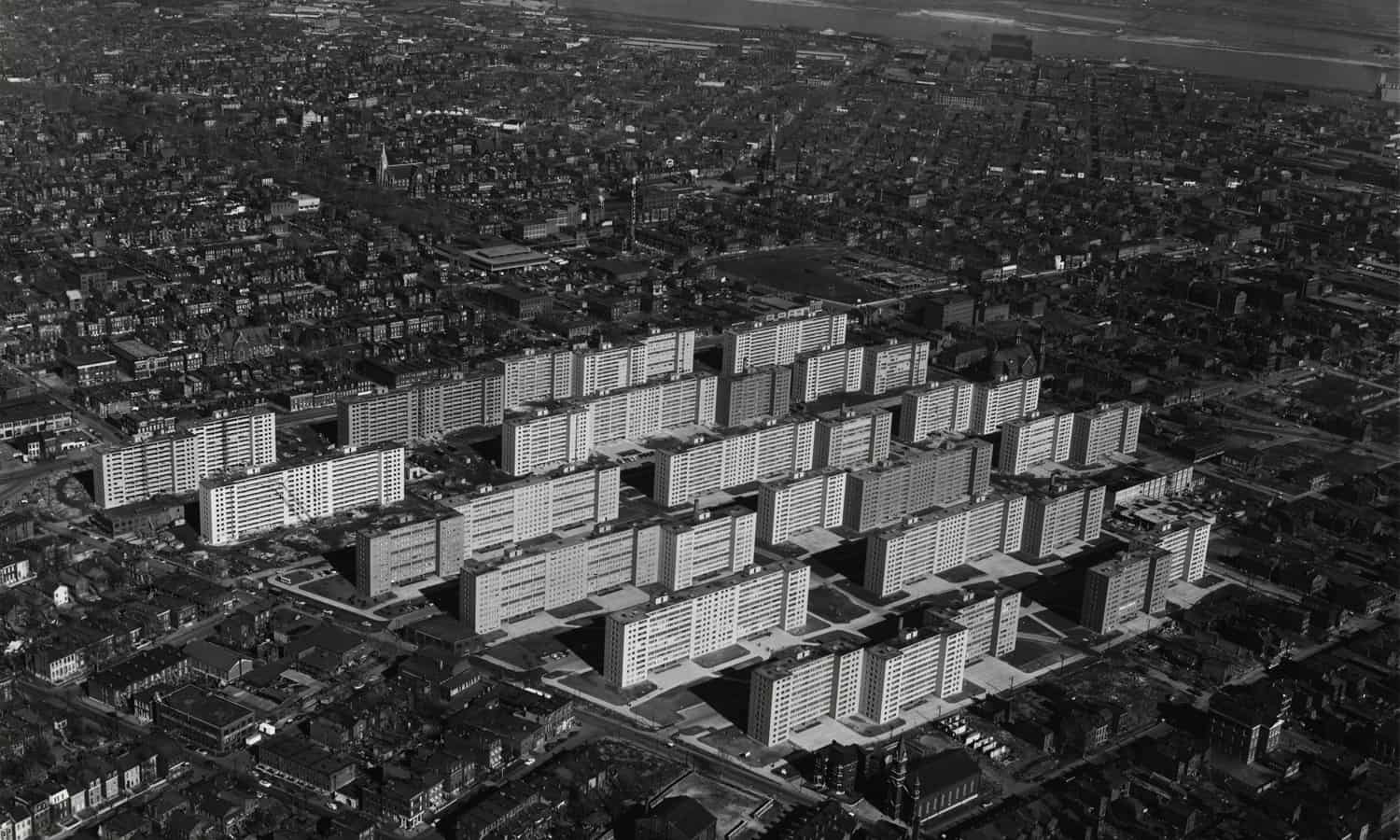Urban Forum Presents The Pruitt Igoe Myth with Farewell to Oak Street at the Mayfair

Mark your calendars, everyone interested in Modern architectural and social history. Urban Forum is presenting its second Urban Film Night at the Mayfair Theatre on March 2, 2016 starting at 6:30pm (Doors open at 6:00pm). Admission is free and on a first come first served basis.
The aim of the Urban Film Series is present films that focus on the mutually impactful relationship between urban design, architecture and people. This year’s screening continues to explore these themes through the lens of St. Louis’ polarizing housing project, Pruitt Igoe. It is interesting to note that when interviewed, film maker Chad Freidrichs indicated that the initial departure point for the archival research underpinning the film was the architecture. However, as the research continued, additional themes began to crystallize with the eventual realization that there were many contributing factors, well beyond just the architecture that lead to the demolition of the Pruitt Igoe less than two decade after the first buildings were occupied. Further reinforcing this point is 44 years after the demolition of most buildings on the 77 acre parcel much of the land remains vacant and many block to the north are significantly underdeveloped.
To add some context, Urban Forum is also presenting Farewell to Oak Street, an NFB short documentary espousing the benefits associated with slum clearance in Toronto’s Cabbagetown. This film is included to help provide background information and a more regional context on how the construction of social housing and slum clearance was viewed at the time. It is also interesting to note the cyclical nature of the arguments made in the film in favour of removing the existing sub-standard housing, many of which returned to promote the replacement of Regent Park.
About The Priutt-Igoe Myth
The Pruitt-Igoe Myth tells the story of the wholesale changes that took place in the American city in the decades after World War II, through the lens of the infamous Pruitt-Igoe housing development in St. Louis. At the film’s historical center is an analysis of the massive impact of the 1949 Housing Act, which built Pruitt-Igoe and other high-rise public housing of the Fifties and Sixties. This critical piece of legislation also initiated the so-called urban renewal program and prompted the process of mass suburbanization, which emptied American cities of their residents, business and industry. Those that were left behind faced a destitute, rapidly de-industrializing St. Louis, parceled out to downtown interests and increasingly segregated by class and race. The residents of Pruitt-Igoe were among the hardest-hit. Their gripping stories of survival, adaptation and success are at the emotional heart of the film. The domestic turmoil wrought by punitive public welfare policies, the frustrating interactions with a paternalistic and cash-strapped Housing Authority, and the downward spiral of vacancy, vandalism and crime, led to resident protest and action during the 1969 Rent Strike, the first in the history of public housing. And yet, despite this complex history, Pruitt-Igoe has often been stereotyped, with help from a world-famous image of its implosion, and used as an argument against Modernist architecture or public assistance programs. The Pruitt-Igoe Myth seeks to set the historical record straight, to examine the interests in Pruitt-Igoe’s creation, to re-evaluate the rumors and the stigma, to implode the myth.
For the trailer click here
For an Interview with Chad Freidrichs (the film maker) click here
About Farewell to Oak Street
This documentary presents a before-and-after picture of people in a large-scale public housing project in Toronto. Due to a housing shortage, they were forced to live in squalid, dingy flats and ramshackle dwellings on a crowded street in Regent Park North; now they have access to new, modern housing developments designed to offer them privacy, light and space.
Image Credit: State Historical Society of Missouri (pruitt-igoe.com)
